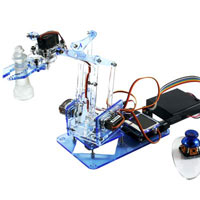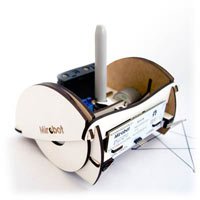5 things I've learned from Kickstarter
It’s been a fascinating few weeks after launching Mirobot on Kickstarter. It’s an amazing way of getting a project off the ground and I’ve had a very positive experience so far. I’ve been genuinely touched by the belief and generosity my backers have shown. I thought a post on my learnings might help others on their own kickstarting journey because it’s a very worthwhile experience so long as you do things properly.

-
Network
It’s pretty well known that the success of a Kickstarter project depends largely on the number of eyes you can get on the project page. This is classic SEO conversion optimisation, but what’s not talked about quite as often is how important the relevance of those eyes are. Make sure you target sites that are going to have readers who are more likely to be interested in your product. For me, this meant going after educational and robotics blogs and interacting with the maker community (all of which were natural things to do anyway).
-
Weekends are quiet
At least they were for me. There was much less activity on Twitter and about half the normal amount of backers over the weekend. It’s probably worth timing your campaign to take this into account. Definitely don’t launch at the weekend!
-
Backers not customers
From my experience people want to get involved with projects they believe in. My goal for Mirobot was to get an engaged group of early adopters who will help me build my product into something that can become even bigger. Some product manufacturers seem to treat Kickstarter as the final stage of product development, but it’s a missed opportunity not to involve people in the product design process - user testing is key to a successful product and here are people who are so committed that they will happily wait months for the finished product. It’s worth trying to ship out an early batch to a small number of people who will help you iron out any problems before you hit mass production.
-
Meet real people
Going to Maker Faire UK gave me the opportunity to show Mirobot to thousands of people and, more importantly, to discuss with them about what they find important and interesting about it. It also generated a lot more coverage because people were much more likely to tweet or blog about something they’ve actually seen. Visit local meet ups and user groups. Networking is not all about manning Twitter!
-
Don’t expect to get much development done
Obviously if you have a large team this might be easier to do, but for me it wasn’t. I’d expected to be able to continue development throughout the campaign but in reality, the constant responding to tweets, backer questions and trying to get more coverage keeps you sufficiently distracted to make focussing on anything else impossible. Make sure you take this into account when planning timescales.
There are plenty more minor things, but these are the main points I’ve learned after putting Mirobot on Kickstarter. I’ll keep the blog updated as the project completes and I switch into delivery mode. In the meantime, at the time of posting there are still a couple of days left to back the project!

